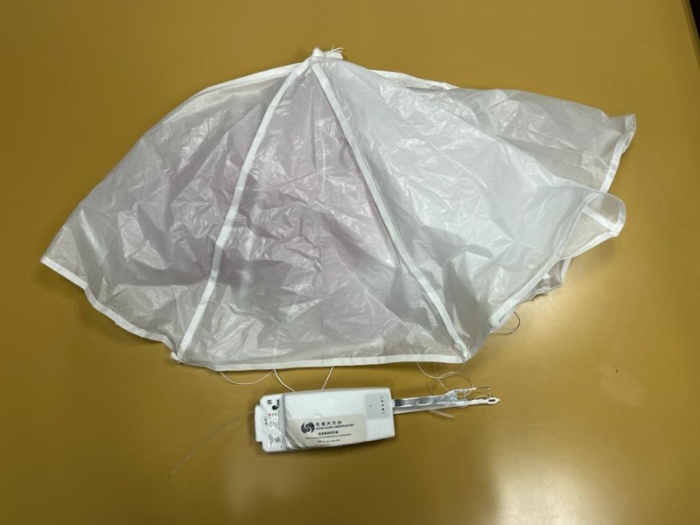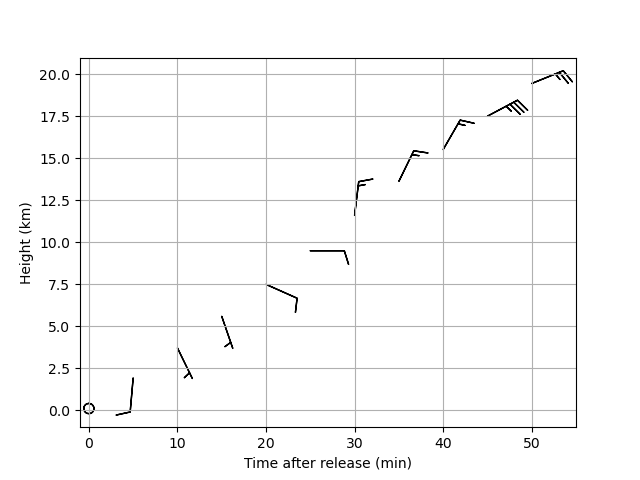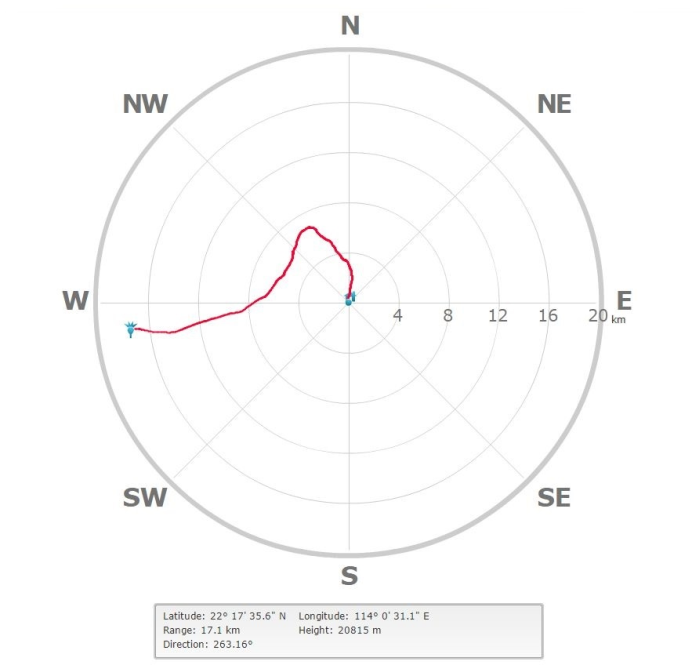The Whereabouts of Radiosondes After Lifting Off
The Whereabouts of Radiosondes After Lifting Off
WONG Kai-chi and WONG Ching-kit
March 2024
Since 1949, the Hong Kong Observatory has been regularly launching sounding balloons carrying radiosondes to collect meteorological data at different altitudes in the atmosphere. To this day, the Observatory releases weather balloons equipped with radiosondes at around 08:00 and 20:00 Hong Kong Time every day from King’s Park Upper Air Meteorological Station. The balloon filled with helium gas ascends slowly, so the radiosonde transmits air temperature, humidity and other parameters at various altitudes back to the ground, while wind speed and direction can be derived from the Global Positioning System signals. As the atmosphere becomes thinner at higher altitudes, the balloon gradually expands during ascent and typically bursts at around 30 kilometres above the ground. Then the radiosonde descends with a parachute, landing slowly back onto the ground.
During the ascent, the radiosonde flies with the ambient winds and sometimes gets drifted far away from King’s Park, ranging from tens to hundreds of kilometres. However, nothing is absolute, the Observatory occasionally receives reports of found radiosondes from the public. On the morning of 30 July 2023, a citizen found a meteorological observation radiosonde (Figure 1) near the cargo terminal in the airport. It was verified to be the radiosonde released at the King’s Park Meteorological Station that morning. The sounding data for that day (Figure 2) revealed that the sounding balloon initially flew northward under the influence of a low-level southerly flow. Later, as the wind direction changed to northeast with increasing altitude, the balloon gradually drifted southwest. After an approximately 53-minute flight, the sounding balloon eventually burst at around 20 kilometres above Discovery Bay on Lantau Island. The radiosonde descended slowly to the ground with the assistance of a parachute.
Upper-air weather observations are crucial for weather forecasting. Once the data is transmitted back to the ground, weather forecasters can analyse the vertical temperature variations and humidity profiles through a tephigram to assess atmospheric stability. This helps them evaluate the cloud cover and the likelihood of severe convective weather for the day. Meteorological agencies worldwide exchange sounding data through the Global Telecommunication System of the World Meteorological Organization, allowing numerical weather prediction models to utilise the sounding data as initial conditions for computation.
In addition to supporting weather forecasting, sounding data has a wide range of applications. Paragliding enthusiasts can refer to the thermal index and low-level winds to determine whether it is suitable for paragliding on a given day. Furthermore, the tephigram can reveal the presence of inversion layer and isothermal layer in the lower atmosphere, which greatly assists the photographers in capturing the magnificent moments for “sea of clouds”.
When you see an ascending weather balloon, do you ever wonder how far it will fly?

Figure 1 On the morning of 30 July 2023, the meteorological observation radiosonde and its attached parachute were found near the cargo terminal in the airport.

Figure 2(a) The wind direction and wind speed data collected by the radiosonde that ascended at 08:00 a.m. on 30 July 2023.

Figure 2(b) The red curve represents the horizontal trajectory of the sounding balloon launched at 08:00 a.m. on 30 July 2023. The starting point and coordinate centre are the King’s Park Meteorological Station, and the endpoint is the location where the balloon burst.